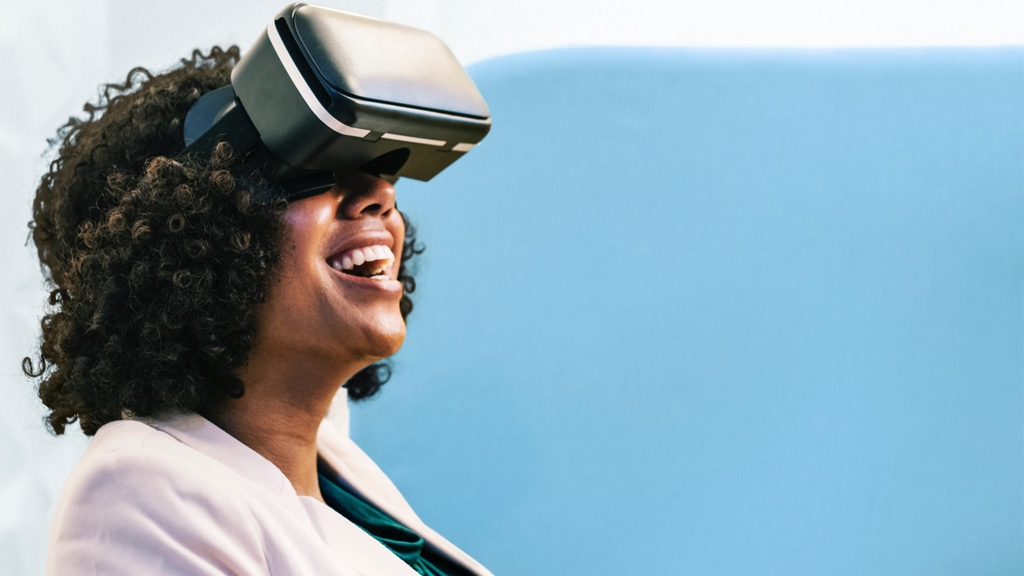VR For Workplace Mental Health
Mental health is becoming a more widely talked about topic, with many digital interventions helping people maintain a healthy mind as well as a healthy body. The industry itself is set for continued significant growth worldwide, predicted to be valued at nearly $30bn globally within the next five years. Ireland will be part of that growth, with a report issued last year by Mental Health Reform, entitled eMental Health: State-of-the-Art & Opportunities for Ireland, acting as an important step towards developing a national ‘eMental Health strategy’.
This is part of the digital transformation of services that is happening across the board, from telephone, text and email counselling to self-administered solutions through apps and websites, such as Silvercloud, Big White Wall and Be Mindful.

How Your Brain Processes Virtual Reality
Virtual Reality is also expected to play a not insignificant part. Research carried out by vStream with its clients and partners, creating patient-centric experiences, uses VR as an ‘interface to the brain’, allowing for an effective reprogramming of a person’s physical responses, leveraging the idea of neuroplasticity, that the brain is malleable and behavioural patterns can be changed. One of the early uses of this was helping a person overcome their fear of heights through exposure therapy techniques. The person puts on a VR headset and is in a fully immersive, visual environment – a building with an elevator. Taking the elevator to the first floor, they are encouraged to walk out from a balcony on a virtual plank of wood. Immediately a fear response is triggered – the amygdala is the part of the brain that manages this response. The instinct is to be fearful but the conscious part of the brain knows that this is only a virtual world, it is a safe environment. Once the person becomes a little more relaxed, and their levels of stress and flight response decline, they are brought up to the second floor in this virtual building and exposed to a greater height. As the immersive experience carries on, the person’s emotional response to ‘heights’ is altered.
Immersivity in VR makes for a very believable experience, convincing human instinct that it is, in fact, real. It becomes an experience that can form memories. As a method of training in the likes of manufacturing, for example, it is proving invaluable. Where two parts of the brain light up when a simple powerpoint presentation is shown, with immersive techniques, five parts of the brain are triggered, allowing for greater recall and, essentially, the creation of a memory. Rather than trying to remember a lot of ‘two-dimensional’ information, the person recalls a whole memory, allowing for a more instinctive response to a challenge, for example assembling or operating a machine. The cost of stopping production on a factory floor can be eliminated, with mistakes significantly reduced.

Digital Mental Health
When it comes to stressful workplaces, therefore, a new dynamic can be formed. As well as training employees in operational matters, health and safety and so on, Cognitive Behavioural Techniques can be digitised to empower employees to ‘inoculate’ against inevitable stressful situations in the workplace. Chris Buckley of the CBT Clinic offers Stress Inoculation Training as a tool to manage vicarious trauma or high-stress situations and suggests this as one of the many tools that could be effectively digitised.
It is not the technology itself that is the solution – it is the application of already proven techniques through these tools that are showing greater efficacy. Society is already grappling with the mental health issues that are associated with so many online platforms, especially with a younger generation where these things are integrated into how they live from when they are toddlers and a parent hands them an iPad. Digital mental health services are offered to some third-level institutions, but there is a real need for these services to be delivered earlier and in a more pervasive way throughout society. Second-level students who are so inundated with digital challenges across social media apps require a digital health solution also – digital health tools need to be as pervasive as the tools that pose a potential threat.
Likewise, in the workplace, a ‘Mental Gym’ will inevitably be as standard an offering, if not a regulation, as health and safety and operational training. This is good for employees and good for employers, reducing stress-related absenteeism and encouraging a happier, healthier workforce. The most important thing a company can look to do as it embraces digital transformation is to ensure it develops a human-centric experience approach, always thinking and designing the solution from the ‘person’s’ point-of-view, be they a technician, patient, consumer and so on. Technology should be used to improve the human experience, not replace it.
About The Author & vStream:
Niall O’Driscoll is the Chief Creative Officer and Co-Founder of vStream. Niall works at the cutting edge of designing and developing new patient-centric platforms using virtual and augmented reality technology. Winning multiple awards for his work over the past 20 years as a writer, director, storyteller, innovator and entrepreneur, he continues to work across many varied verticals including sports, retail and healthcare, visitor attractions and property development pushing the boundaries of concept through continued R&D.
vStream is an Irish company, specialising in innovation, consultancy and digital transformation for global clients including McLaren Formula 1, Pfizer, Roche, SAP, Coca Cola, Audi, The NFL and Twitter.
Contact Us:
If you would like to discuss how your business could benefit from immersive technology then get in touch by phone on +353 1 662 2345, email info@vstream.ie or simply fill out the contact form below to book a digital transformation strategy consultation. Further case study examples available upon request.
